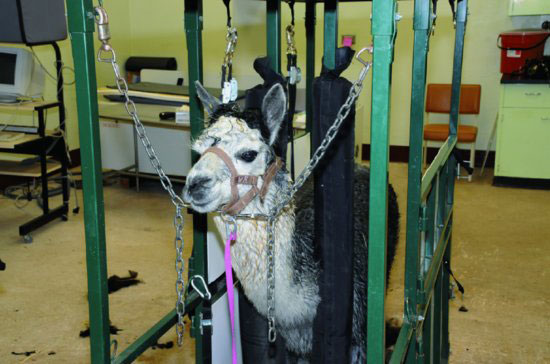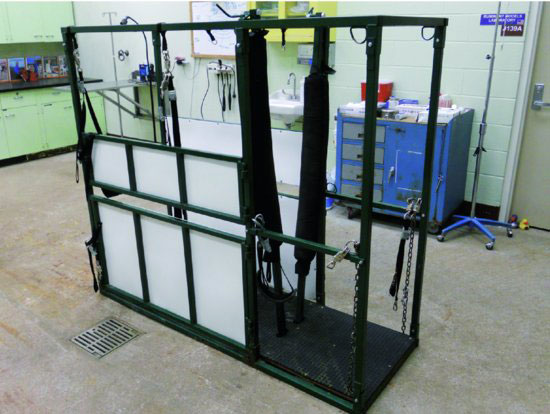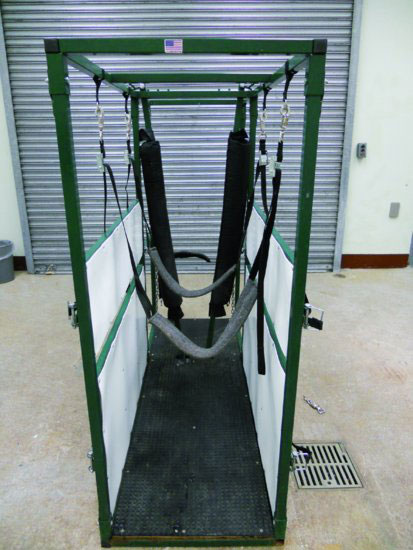RESTRAINT/POSITION
Standing/cushed position may be used.
TECHNICAL DESCRIPTION OF PROCEDURE/METHOD
Haltered animals may be led or “passed” into a chute and the shoulder braces locked in alongside the neck. Animals that are reluctant to enter the chute may be pushed in by use of a rump rope (as when loading horses). It may also be helpful to have another camelid in front of the chute to provide companionship. Once restrained in the shoulder brace, the halter or lead rope should be affixed to the chute by use of quick-release hardware or knots (Figure 4.4). Some chutes come with padded straps, which may be placed under the brisket, under the inguinal region, and over the cervico-thoracic spine to limit movement and animals from lying down during procedures or examination (Figure 4.5).
Figure 4.4 An alpaca restrained in the head catch, with the halter held by cross chains with quick release snaps, allowing for immediate release in case of sudden recumbency.

Stay updated, free articles. Join our Telegram channel

Full access? Get Clinical Tree




